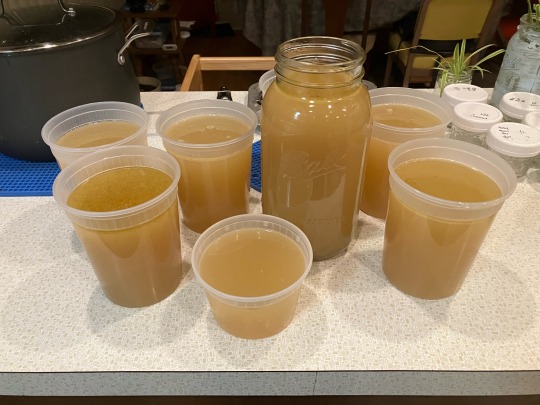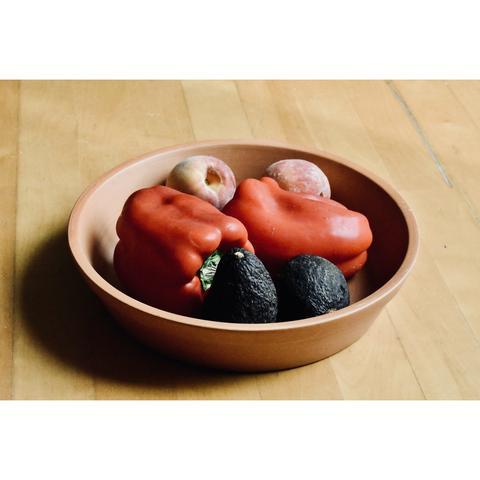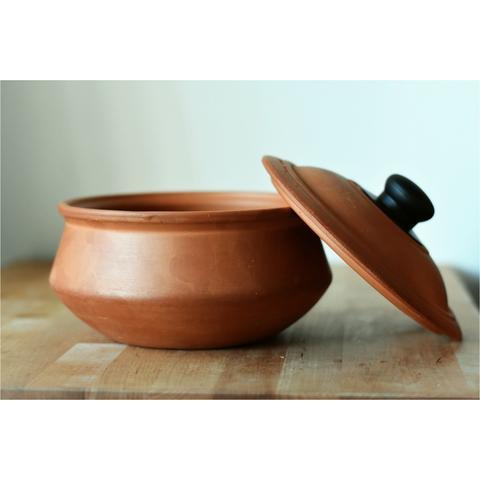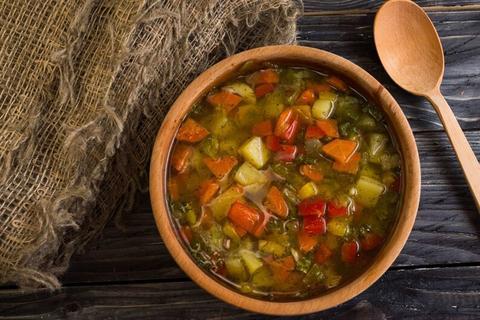#for comparison the stainless pot absorbs and retains heat better than the aluminum
Explore tagged Tumblr posts
Text
My favorite post-thanksgiving activity, stock!

Two birds worth, since my father has to smoke one and my mother has to roast one.

Just over eight quarts after it was strained off and the dregs discarded. Now it goes into a covered crate on the back porch to cool overnight!
About half of the stock will be distributed back to the family for use throughout the year, and the rest will stay with me.
#the two quart Ball jar was a recent thrift store find#for comparison the stainless pot absorbs and retains heat better than the aluminum#cooking#stock#turkey#turkey stock#thanksgiving#leftovers#waste not want not
2 notes
·
View notes
Link
The Health Benefits of Cooking on Earthen Vessels: Supercharge Your Diet
Earthenware pots are handmade and can be found at some handmade Etsy store. They come in a variety of shapes, sizes, and colors!
In this blog post we will discuss the health benefits of cooking with earthen vessels.

Cooking foods on clay pots is said to provide a number of health benefits including improving mineral absorption, increasing nutrient content in food, reducing exposure to toxins by sealing in moisture and flavorings.
Would you like to read about making your meals look beautiful? Read my last blog post here

- Cooking with clay pots is said to reduce the amount of nutrients lost when boiling vs aluminum cooking pots.
- Clay pot cooking helps keep minerals and vitamins from escaping into air or water, retaining more than 12% more calcium that aluminum or stainless steel cookware.
- The porous surface on a handmade casserole pot provides an ideal environment for food to cook slowly and retain all the nutriments and fibers that are on it.
- Clay pots have a lid to keep the flavors in, so you get the full flavor and all the nutriments to boost your healthy lifestyle.
- The clay pot also locks in moisture which helps preserve food's flavor, color, texture and nutrients; as opposed to releasing them into water or air like metal cookware does when heated.

The Health Benefits of Cooking on clay are excellent to keep a balanced diet while not changing your eating habits.
Clay vessels can be used to prepare a wide range of recipes as handi, goulash, casseroles, Vegetable ragouts and ratatouille.
Baked potatoes.
Whole chickens, Cornish hens, and ducks, along with vegetables.
Meatloaf.
Baked ziti or lasagna.
Stews and casseroles.
Baked cheese, such as feta, with olives and fresh oregano
Bread puddings
Fruit cobblers
Whole grain breads
...and many many more. They are widely used in India, Pakistan and Eastern Europe but now you can also benefit of it by learning these easy tricks on how to use clay cooking pots.

Earthen vessels are also beneficial in the kitchen because they provide a much more stable temperature than metal pots, meaning you don't have to worry about hot spots and cold spots. They're not porous so any food on them is sealed off from outside bacteria or viruses that might cause spoilage. And finally, clay cooking pottery can last long time by just following these easy steps (read below)
1. Preparing Clay Pots Prior to First Use:
Take the earthen pot and immerse it in water for a couple of hours.
You can also leave it immersed in a sink filled with water overnight.
Remove from water and let the pot dry completely.
2. Seasoning Clay Pots:
Take any vegetable oil and rub it nicely all over the pot.
Fill the pot up to ¾ level with water and cover with the lid before placing it on your stove at low temperature for 2-3 hours. You can also keep it in your oven at 350 degrees Fahrenheit instead.
Bake the pot for 2 to 3 hours before removing from the heat. Let it cool down before washing. This process hardens the pot, makes it crack resistant and also helps in getting rid of the clay smell.

3. Before Cooking:
Submerge the clay pot in water for approximately 15 to 20 minutes before cooking food so that the pot absorbs water. The steam released as the pot gets heated slowly helps in preventing the food from drying out while maintaining its natural flavours.
Ensure proper temperature settings because a sudden increase or decrease in temperature may lead to cracks or breakage. Place the pot in the centre of the oven and let it slowly heat. Always cook food on low or medium heat.
4. While Cooking:
The ideal cooking temperature should be between 190 degree Celsius and 250 degrees Celsius. Unlike metal cookware, clay pots take longer to heat, therefore, on an average, cook the food for 15 to 20 minutes longer in comparison to your regular pots.
While cooking food in a clay pot, the temperatures need to be set approximately 40 degrees Celsius higher than your regular cookware. In case, the recipe has a longer duration, it is suggested that you cook on low heat.
Never add cold water or cold spices while the pot is hot as it may lead to breakage or cracks. If required, add only warm water.

5. Post Cooking:
Always use oven mittens or any kind of bakers pad to lift the hot pot.
Place the pot on a mat, wooden surface or kitchen towel. Placing a hot pot on a cold surface may lead to cracks.
Be careful of hot steam while removing the lid of the pot.
These are some basic steps that would help in making cooking more effortless and easy while using clay pots.

You might also want to know how to clean clay pots, right?
How To Clean Clay Cookware?
Taking care of your clay pot is important too, therefore, follow these simple steps while cleaning your earthen cookware:
As far as possible, make sure you hand-wash the clay pots and avoid putting them in a dishwasher.
Immerse the pot in warm water to loosen the bits of food.
Do not use harsh chemical detergents and avoid excessive scrubbing.
A mixture of baking soda and water can be applied to the pot for removing the strong smell of certain ingredients.
If any kind of mould gets formed, put salt or baking soda on a scrub pad and gently remove the mould.
Boil the pot in water for 20 to 30 minutes to unclog the pores.
Never use detergent or soap to clean the clay pots. The pores may absorb the soap and lend a soapy flavor and taste to your dishes.
Are you finding this blog post interesting? I prepared a few mont frequent asked questions, here we go:
FAQs
Following are some frequently asked questions about cooking in clay pots:
1. Which Is Better: Glazed or Unglazed Cooking Pots?
Though there are both varieties of pots available in the market, it is recommended to pick up unglazed pots. Because no matter what claims the manufacturers may make, the glazed pots would contain harmful chemicals. These pots emit harmful toxins when they are heated up or during the process of cooking.

2. Can Clay Pots Be Used on a Gas Stove?
Yes, you can use clay pots on your gas stove. However, it is important to keep the temperature under check because extreme temperatures may break the pots. Using a heat diffuser can prevent extreme heat exposure to the clay pot.
3. Are Clay Pots Toxic?
Clay pots are very safe for cooking. To be doubly sure, we recommend picking up unglazed pots rather than semi-glazed or glazed ones as there are chances of toxic emission because of the chemical used for glazing these pots.
4. Can Clay Pots Go in the Fridge?
Yes, you can place a clay pot in your refrigerator but make sure it cools down completely or else it may crack or break.
If you haven’t got hold of a clay pot until now, we suggest getting one and experiencing the goodness of health and flavour that is lacking in usual cookware or utensils.

As a conclusion, you may have wondered where to find nice handmade clay pots now?
Here below you will find some interesting links:
Etsy Store for buying clay pots
Pinterest inspiration about using clay cooker
Please find the most read articles are:
Top 3 benefits of clay pot cooking
One hack to present food as exotic and inexpensive as never before
Easy and delicious tikka masala recipe explained
Thanks for reading, please go find my other blog posts here https://solytierra.shop/blogs/news
Bernat from Pottery Sol y Tierra
#blog#chicken handi#Clay#Cooking vessel#curating clay cooking#earthen vessels#Food#Handi Pot#Handmade#Handmade casserole#Handmade pots#Pakistani handi#paneer#Recipe#Rustic#Terracotta#Tikka Masala#well-being
0 notes